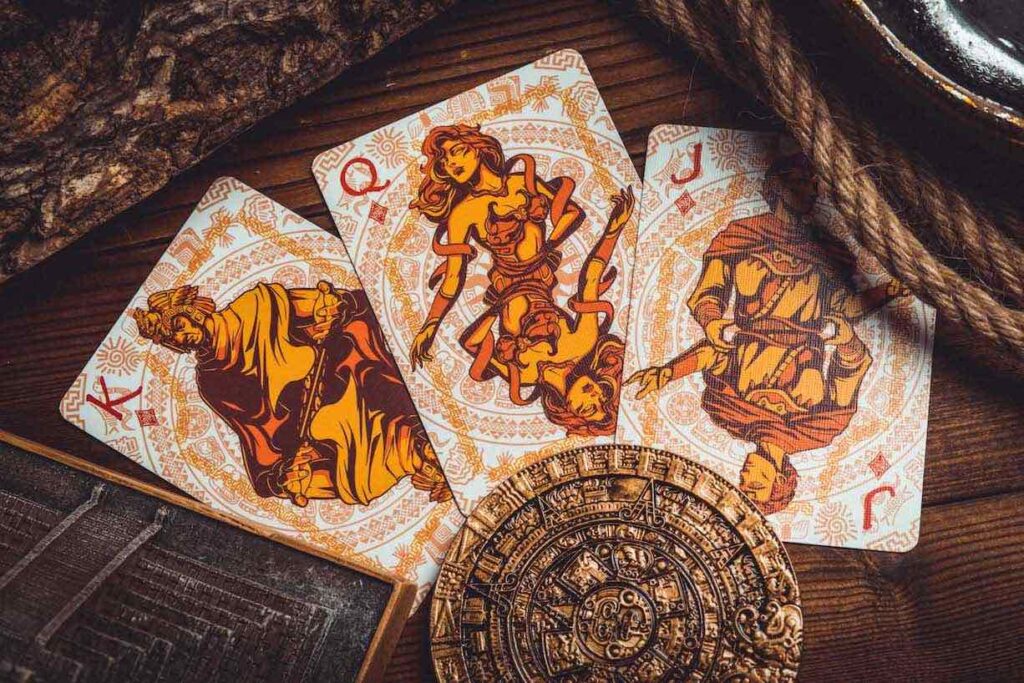
In a standard deck of playing cards, there are four suits: spades, hearts, diamonds, and clubs. Each suit contains thirteen cards: Ace, two, three, four, five, six, seven, eight, nine, ten, Jack, Queen, and King.
The Jack, Queen, and King are often referred to as “face cards” because they have pictures of faces on them. The Jack is represented by a young man, the Queen by a woman, and the King by a man with a crown. These face cards are valued at ten points each in many card games.
In some games, the Ace is also considered a face card and has a value of eleven points. In other games, the Ace can have a value of either one or eleven points, depending on the situation.
The Jack, Queen, and King are sometimes referred to as “JQK” or “jacks, queens, and kings.” This can be a useful abbreviation to know when talking about specific cards in a game. For example, if you have been dealt a hand of cards in a game of poker and you have a Jack, a Queen, and a King, you could say that you have “a JQK” or “jacks, queens, and kings.”
Overall, the Jack, Queen, and King are important cards to know in a deck of playing cards. They are often worth a significant number of points and can be useful in achieving a winning hand in many card games.
